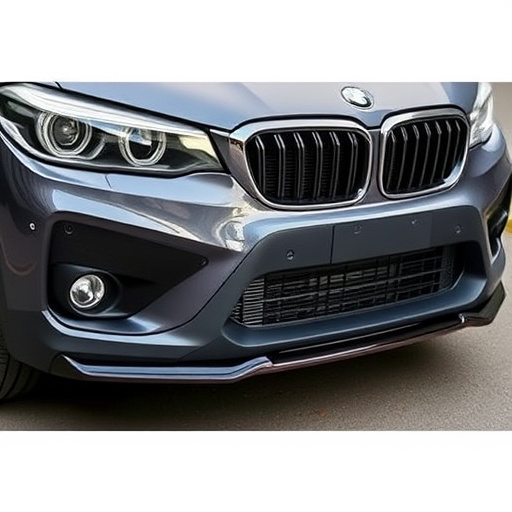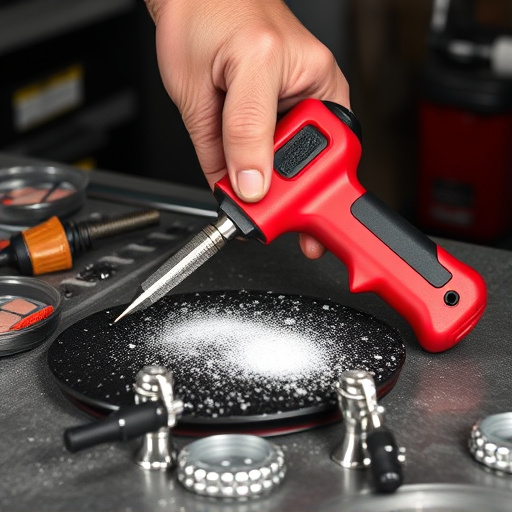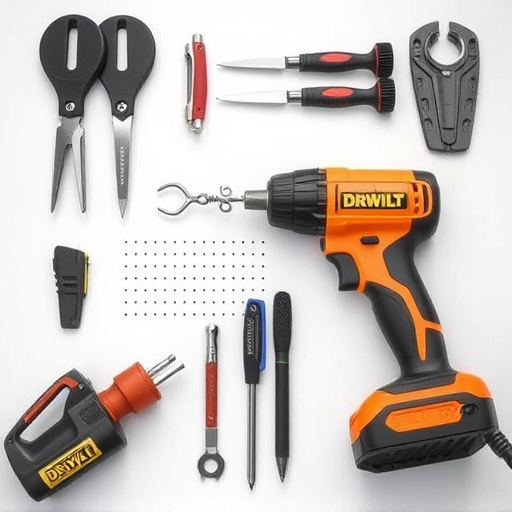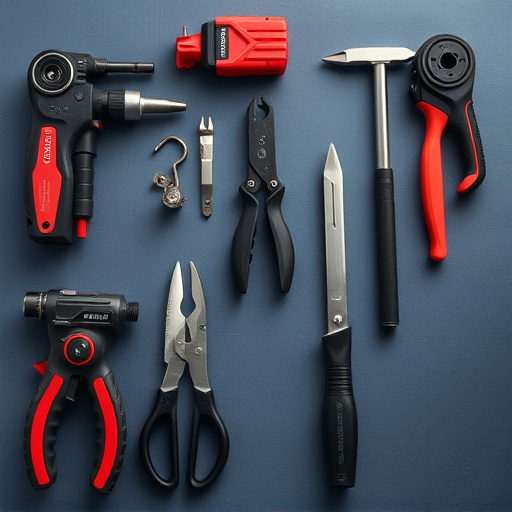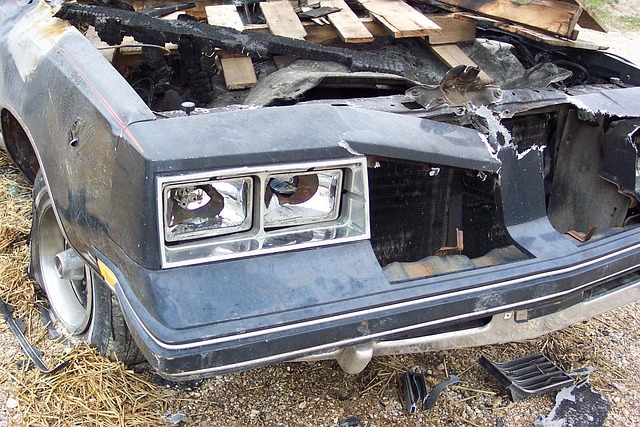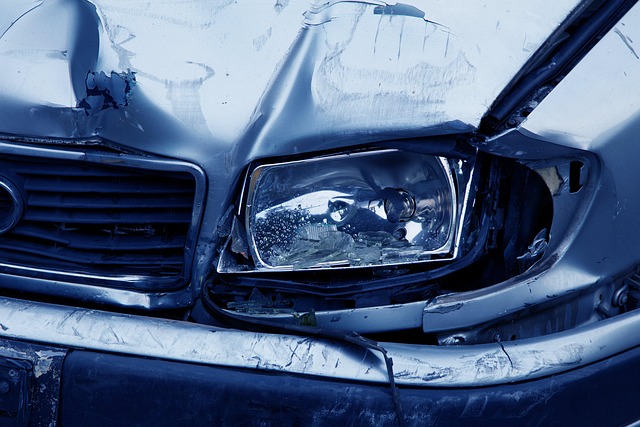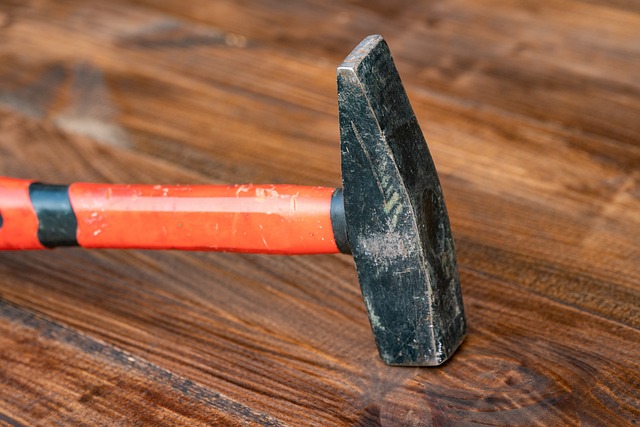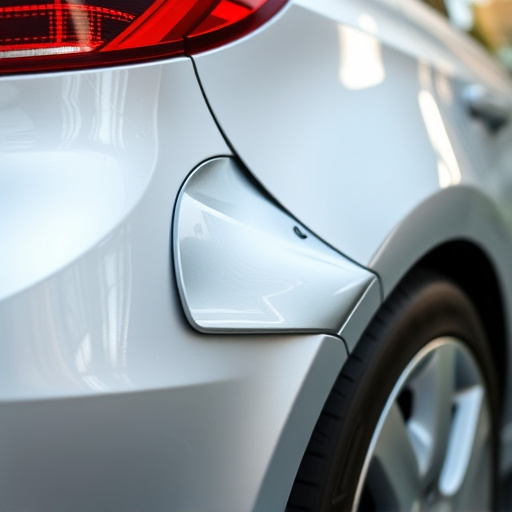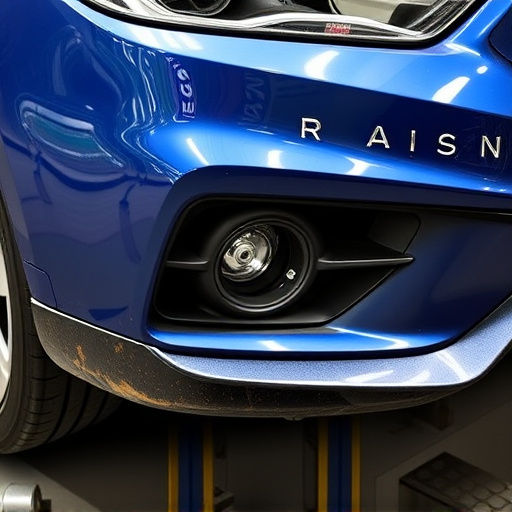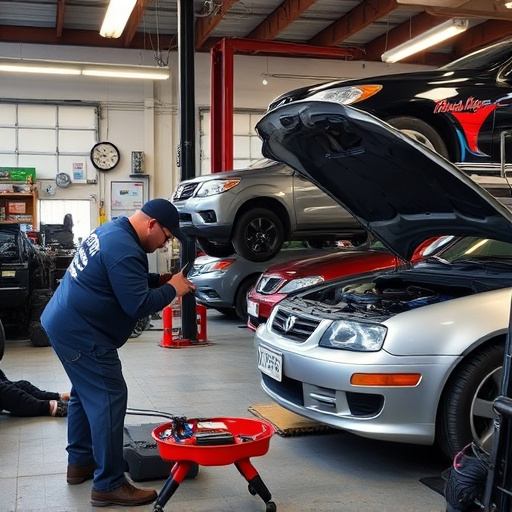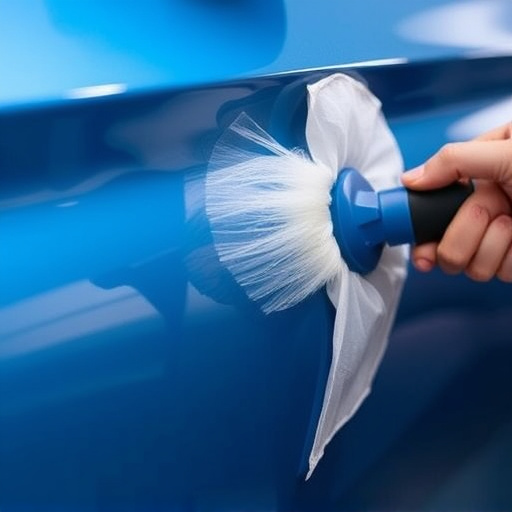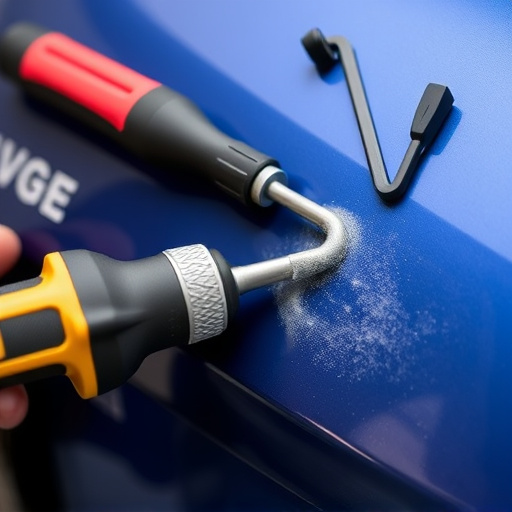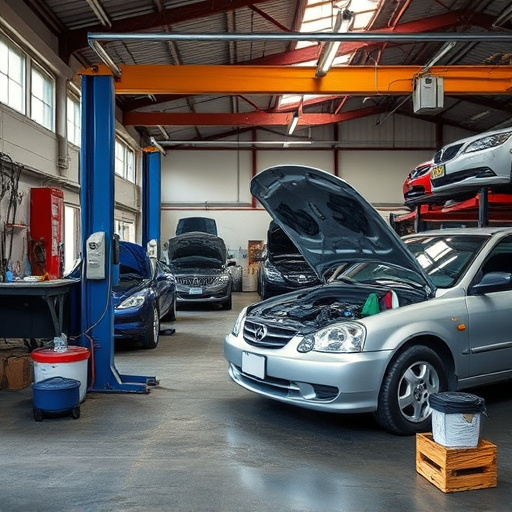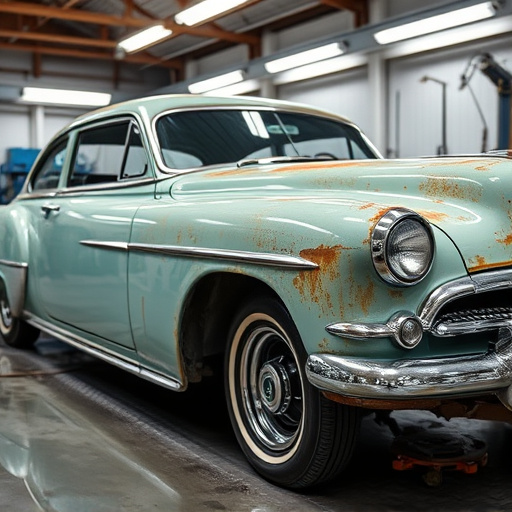Preparing car surfaces with meticulous cleaning and inspection is vital for a three-stage paint system's longevity and quality. Priming enhances adhesion and fills imperfections, while choosing the right top coat determines aesthetics and durability, ensuring professional repairs that preserve vehicle value.
Discover the secrets to achieving a professional finish with a three-stage paint system. This comprehensive guide breaks down the process into three crucial steps: preparing your surface, applying an even primer coat, and finishing with the perfect top coat. By mastering these best practices, you’ll ensure optimal adhesion, enhance durability, and achieve the desired aesthetic for any project.
- Prepare Surface: Clean, Prime, and Inspect Thoroughly
- Apply Primer: Ensure Even Coverage for Optimal Adhesion
- Finish with Top Coat: Choose Right Type for Desired Look
Prepare Surface: Clean, Prime, and Inspect Thoroughly
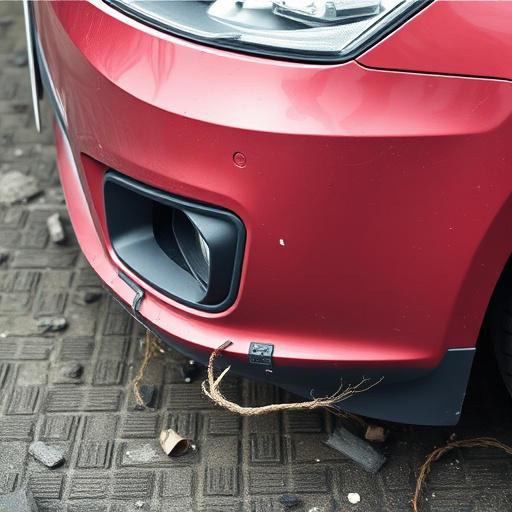
Before applying a three-stage paint system, ensuring the surface is properly prepared is paramount for achieving a durable and high-quality finish. This involves a meticulous process starting with thorough cleaning to remove any dirt, grease, or debris that could hinder adhesion. A pressure washer or degreaser can be used for this initial step, depending on the scale of the project. Once cleaned, priming becomes crucial. Primers act as a bridge between the surface and paint, offering better coverage, even distribution, and enhanced bonding strength.
Additionally, inspecting the surface is an often-overlooked but critical step. This includes checking for any existing damage like rust, cracks, or blisters, which should be repaired before priming. For auto painting or autobody repairs, this meticulous preparation is especially vital in fleet repair services where maintaining a consistent and professional finish is essential to fleet managers’ standards.
Apply Primer: Ensure Even Coverage for Optimal Adhesion
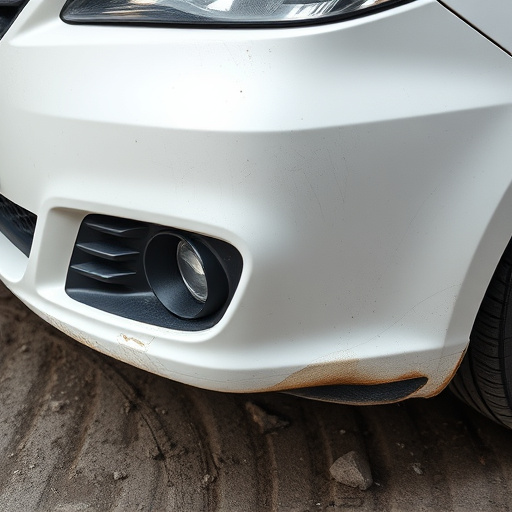
Applying primer is a crucial step in any three-stage paint system, particularly when it comes to achieving optimal adhesion and long-lasting results. It acts as a bridge between the vehicle’s surface and the topcoat, ensuring the paint sticks evenly and strongly. For best results, use a high-quality primer designed for automotive applications, which will fill in small imperfections like scratches or dents, providing an even base for painting.
During application, pay close attention to achieving even coverage. This means using the right tools – often a low-pressure air sprayer – and maintaining a consistent distance from the surface. Ensure every nook and cranny is reached, especially around curves and edges. Even coverage not only enhances aesthetics but also prevents weak spots in the final finish, crucial for a durable car scratch repair or collision repair process in a vehicle body shop.
Finish with Top Coat: Choose Right Type for Desired Look
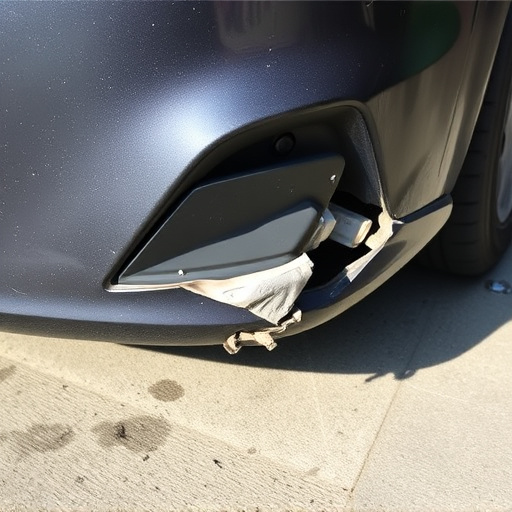
When finalizing your three-stage paint system application, selecting the appropriate top coat is a crucial step that significantly impacts the final aesthetic and durability. The type of top coat you choose should align with both your desired look and the specific needs of the car body repair or vehicle collision repair process. For a sleek, glossy finish, a urethane-based top coat is an excellent choice, offering exceptional shine and resistance to scratches. Conversely, for a more matte appearance, you might opt for an acrylic top coat, which provides a subtle, non-reflective surface.
Consider the environmental conditions in your region as well. In areas with high UV exposure, a top coat with UV protection will help maintain the vibrancy of the paint job over time. For those dealing with collision repair services, choosing a top coat that seamlessly matches the original vehicle color is essential to ensuring a professional and undetectable repair. This precision not only preserves the vehicle’s value but also contributes to a smoother transition from the repair process to the finished product.
Implementing a three-stage paint system requires careful preparation and attention to detail. By thoroughly cleaning, priming, and inspecting the surface, ensuring even primer coverage, and selecting the appropriate top coat, you can achieve exceptional results. These best practices guarantee optimal adhesion and a desired finish, making it a reliable method for any painting project.
